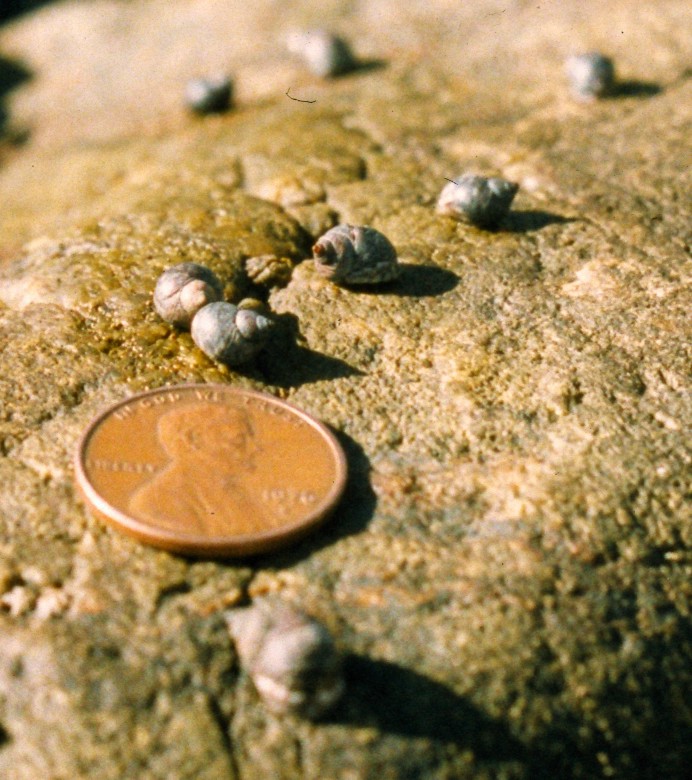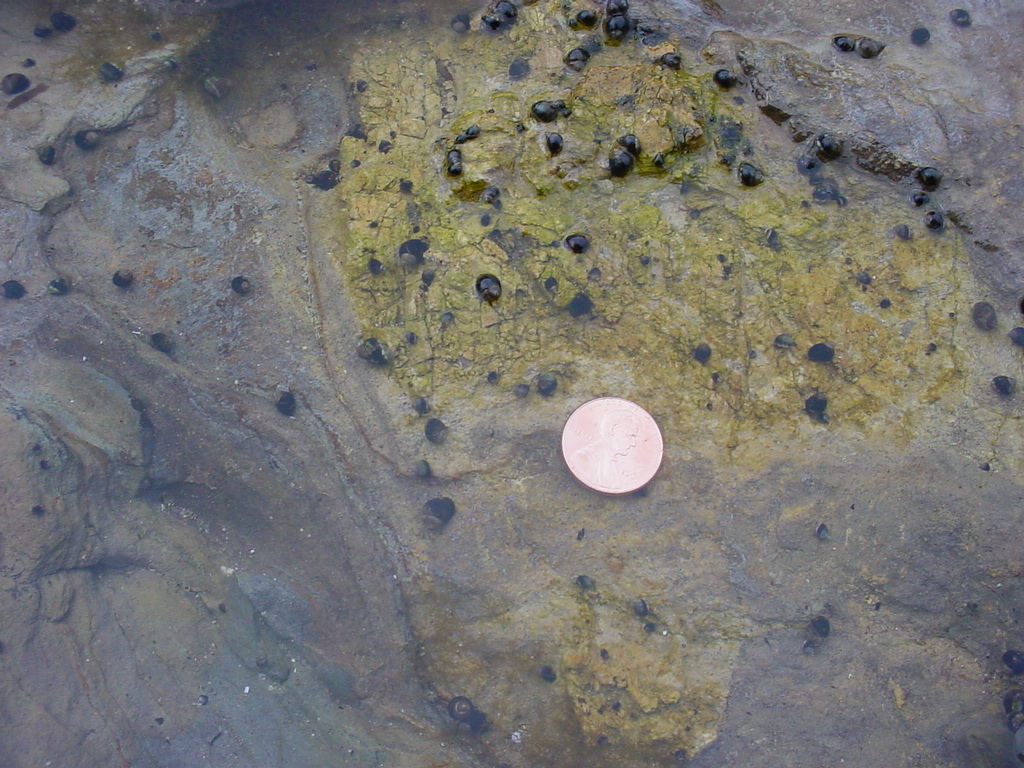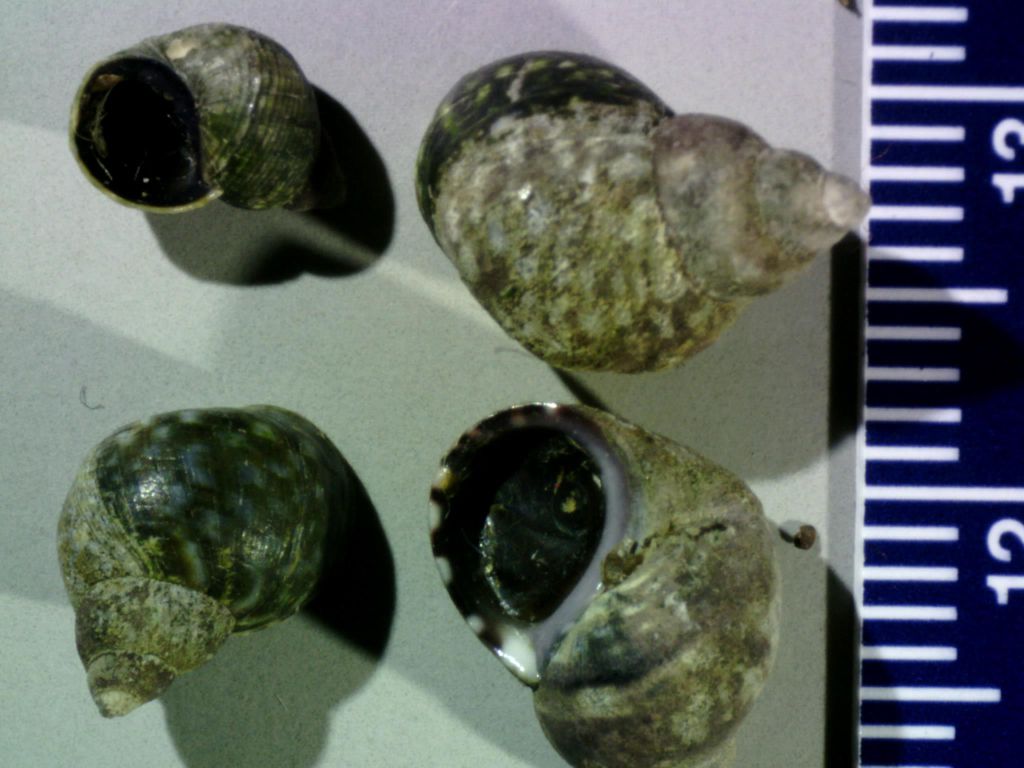Littorina scutulata Gould, 1849Common name(s): Checkered periwinkle |
|
| Synonyms: |  |
| Phylum Mollusca
Class Gastropoda Subclass Prosobranchia Order Mesogastropoda Suborder Taenioglossa Family Littorinidae |
|
| (Littorina scutulata on Catalina Island, CA) | |
| (Photo by: Dave Cowles May 1996) | |
How to Distinguish from Similar Species: L. sitkana has a diameter almost equal to the height, has spiral ridges.
Geographical Range: Kodiak Island, Alaska to Bahia de Tortuga, Baja California
Depth Range: High and upper middle intertidal
Habitat: Common on rocky shores and rocks within bays.
Biology/Natural
History: Lives lower
on rocks than does L. planaxis. Migrates
up and down rocks
with the tide. Crawl out of tidepools at night, in during the
day.
Often hide at low tide in cracks or barnacle shells. Muscular
waves
of foot travel from front to rear (retrograde). The waves on
the
two sides of the foot are out of phase with one another
(ditaxic).
Feeds mainly on diatom films, microscopic algae, lichens,
etc. Will
also feed on Pelvetia, Ulva,
other larger algae. Breeds
in all seasons except summer. Eggs are laid underwater,
individually
packaged in flattened capsules within a sausage-shaped gelatinous mass
coiled in a spiral and holding over 2000 eggs. Leptasterias
hexactis
feeds on this snail. Eye anatomy is similar to that of the
land snail
Helix
aspera. In Oregon over 10% of individuals harbor
parasitic flukes.
| Return to: | |||
| Main Page | Alphabetic Index | Systematic Index | Glossary |
References:
Dichotomous Keys:
Kozloff
(1987, 1996)
General References:
Morris
et al., 1980
Kozloff,
1993
Scientific Articles:
General Notes and Observations: Locations, abundances, unusual behaviors:

Littorina often aggregate in the very high intertidal, inside tidepools or on the bare rock. Photo by Dave Cowles at Little Corona del Mar, CA March 2005

This closeup clearly shows the checkered outside and purplish inside
the aperture
with a dark, horny operculum.
Scale marks to the right are mm. Photo by Dave Cowles, July 2020.
Authors and Editors of Page:
Dave Cowles (2004): Created original page